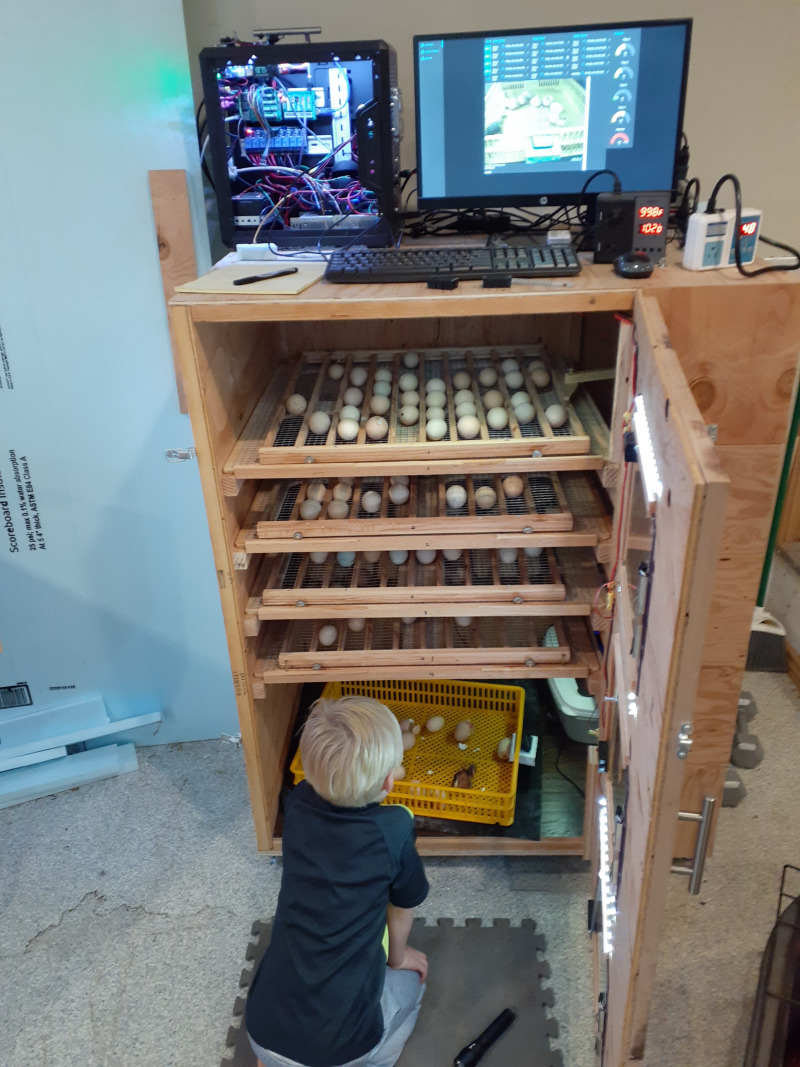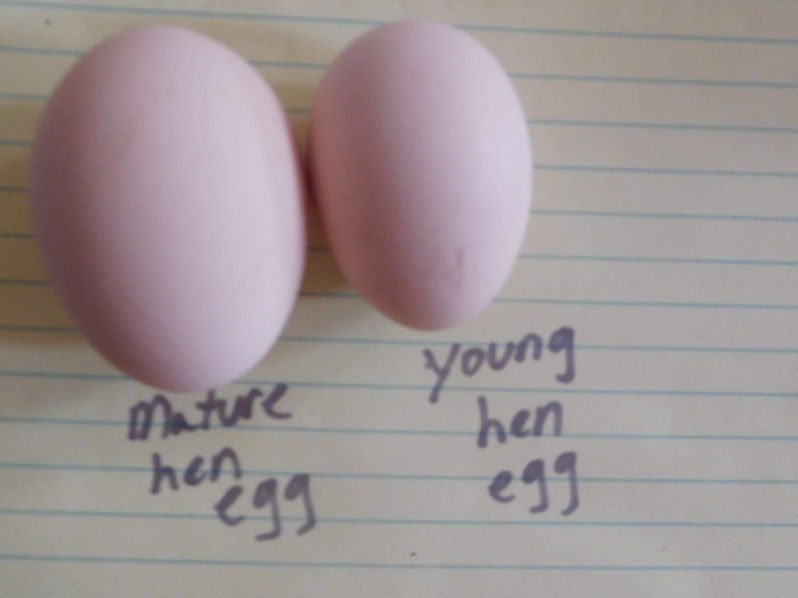Eggs and Chicks

Golden Laced Wyandotte Egg Production
Fresh eggs for the table or hatching eggs for the incubator.
The first thing to remember is to get the eggs out from under the chicken as often as possible. A roll-out nest box is very helpful in this situation. Once a chicken gets a clutch of eggs to sit on, she may go into brooding mode and stop laying eggs in order to hatch out her clutch. Sometimes the best thing to do for a broody hen is to give her a clutch of eggs and let her hatch them out.
The next thing to remember is, no sleeping in the nest box unless you want a hen to hatch out a clutch of eggs. Neither hens nor roosters should be allowed to sleep throughout the night in the nest box. Besides all the pooping they do at night, this is brooding behaviour and not what you want if egg production is the plan. If a hen tries to sleep in the nest box, once it gets dark, take her out and place her on a roost. It is their nature to sleep on a roost until they are ready to start brooding.
If the eggs are coming out covered in poop, you may have issues with parasites. I add Diatomacious Earth to wet mash feed if I notice this. If your eggs are for the table, put them in the fridge.
Hatching

If your eggs are for hatching, I assume you have a rooster on duty and an incubator ready.
Make sure that during egg handling, you don't carry them in a container where they can roll around and bang into each other. Keep in mind that all eggs have an air bubble at the large end and getting jarred excessively can cause this bubble to shift out of position.
Gather the eggs each day in preparation for incubating a batch of eggs. Don't use smaller eggs from young hens. They may hatch but they will have a hard time and are more likeley to die at some point.

Your eggs need to be stored a certain way until you are ready to start incubating them. Many guides you find online will not tell you this but during storage, the eggs should be kept at 60 to 65 degrees Fahrenheit and 70 to 90% humidity to avoid moisture loss. They also need to be turned at least once per day just as they would be in nature while being stored before the brooding begins. You can get away without following this procedure but your hatching rate will decline. In my house, I have a pump room that just so happens to be around 65 degrees and 70% humidity. I store my eggs in this room by placing them small-side down into normal egg cartons and then I turn the egg cartons up on their end so they're leaning against the wall. Each time I add new eggs to the group, I tilt them the other direction. You can store them this way for up to three weeks however I only store them for one week before starting incubation. During storage they continue to lose moisture so less time is better. Remember, low humidity can cause moisture loss.
Once you are ready to incubate the eggs, chicken eggs need to be at 99 to 102 degrees Fahrenheit. And about 55 to 60% humidity. They need to be rolled every few hours for 18 days. At this point I candle them with a bright light at the large end. If I see a light circle where the air pocket is and the rest is dark, I keep the egg. If light shines through the whole egg just like it does on a new one, I discard the egg. In a dark room, you may even see blood vessels in the side-wall of the egg. For the next two days, they should be allowed to rest still in the incubator. After 20 days if you've done everything correctly, your chicks will hatch out. These numbers apply to most varieties of backyard chickens so keep in mind that if you're hatching other species of bird, all these numbers could be different.
Help Hatching
In general you don’t want to help a chick hatch out but you can save a chick that is having a hard time. The main cause of hardship is due to moisture loss or starting as a small egg from a young hen. Once a chick pokes its first hole in the shell, it tries to rotate around and poke out the perimeter of the egg sort of like a can opener. Once it opens, the chick should come out fairly quickly. If this process stalls, the inner egg membrane starts to dry out and stick to the hatchling. What I do in this case is poke out the rest of the circle around the egg with my fingernail if needed, then I submerge the whole thing in a bowl of warm water (100 F) with a dab of hydrogen peroxide. I make sure the little bird’s beak stays above the water to avoid drowning. Then it goes back in the incubator for a while. You can repeat this process if part of the egg membrane gets dried onto the chick. This also works if you have a young chick with a glob of dried poop on its bum. Just soak it in warm water until you can dislodge it, then make sure it goes under a heat lamp to dry.
--Will Welker



